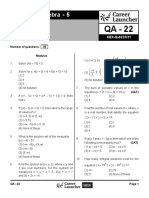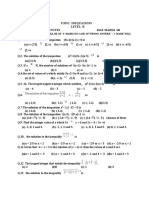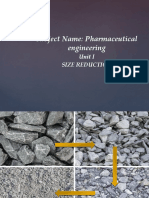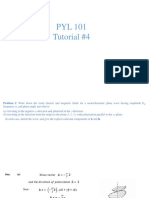0% found this document useful (0 votes)
51 views13 pagesPractise Test Basic Maths
The document outlines a practice test for the JEE exam, detailing a marking scheme where correct answers earn +3 points, incorrect answers incur -1 point, and unanswered questions receive 0 points. It includes a series of mathematical questions across different sections, with options for each question. The document also provides solutions to the questions, indicating the correct answers and some reasoning behind them.
Uploaded by
Akshat Pal 7 Diamond 3Copyright
© © All Rights Reserved
We take content rights seriously. If you suspect this is your content, claim it here.
Available Formats
Download as PDF, TXT or read online on Scribd
0% found this document useful (0 votes)
51 views13 pagesPractise Test Basic Maths
The document outlines a practice test for the JEE exam, detailing a marking scheme where correct answers earn +3 points, incorrect answers incur -1 point, and unanswered questions receive 0 points. It includes a series of mathematical questions across different sections, with options for each question. The document also provides solutions to the questions, indicating the correct answers and some reasoning behind them.
Uploaded by
Akshat Pal 7 Diamond 3Copyright
© © All Rights Reserved
We take content rights seriously. If you suspect this is your content, claim it here.
Available Formats
Download as PDF, TXT or read online on Scribd
/ 13





















































































